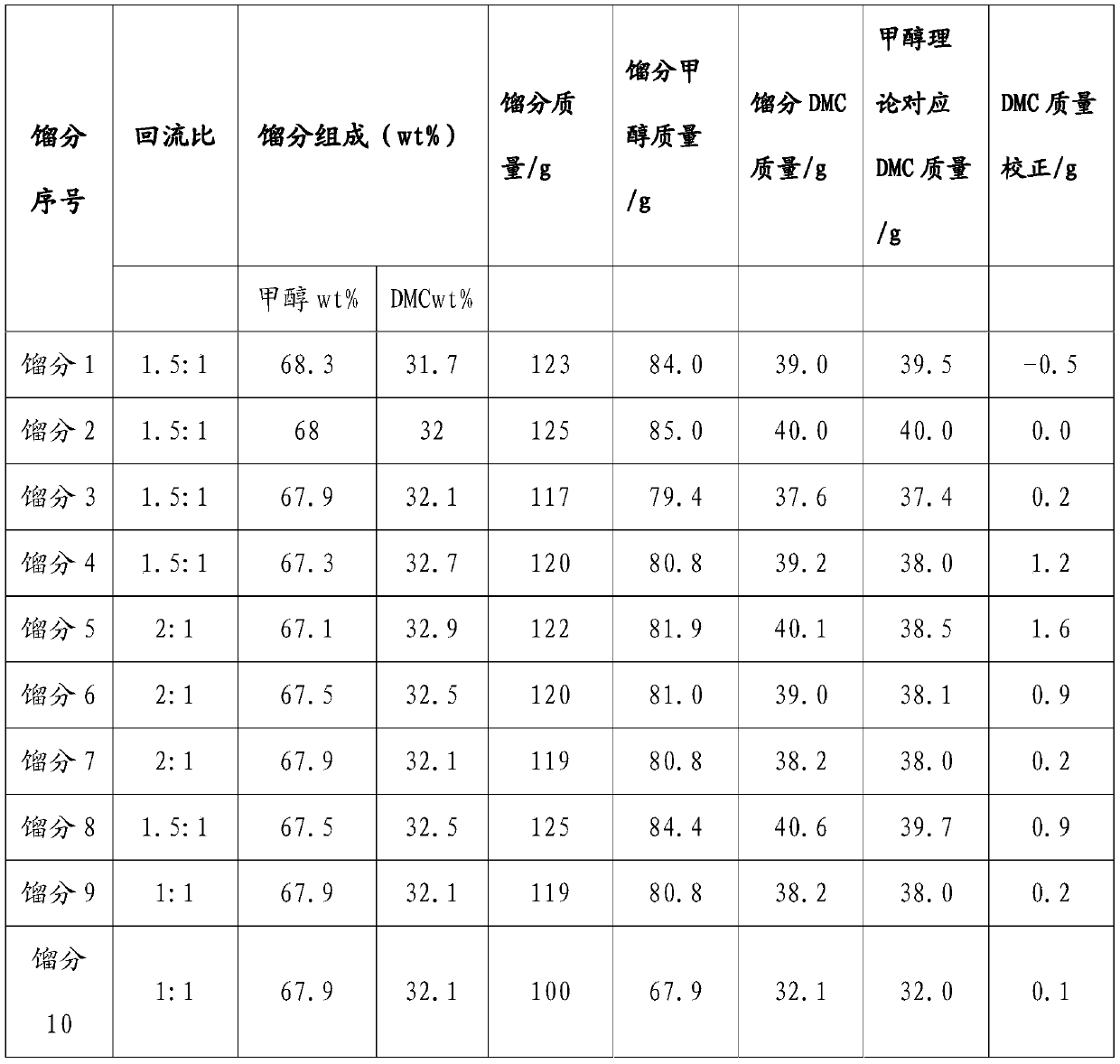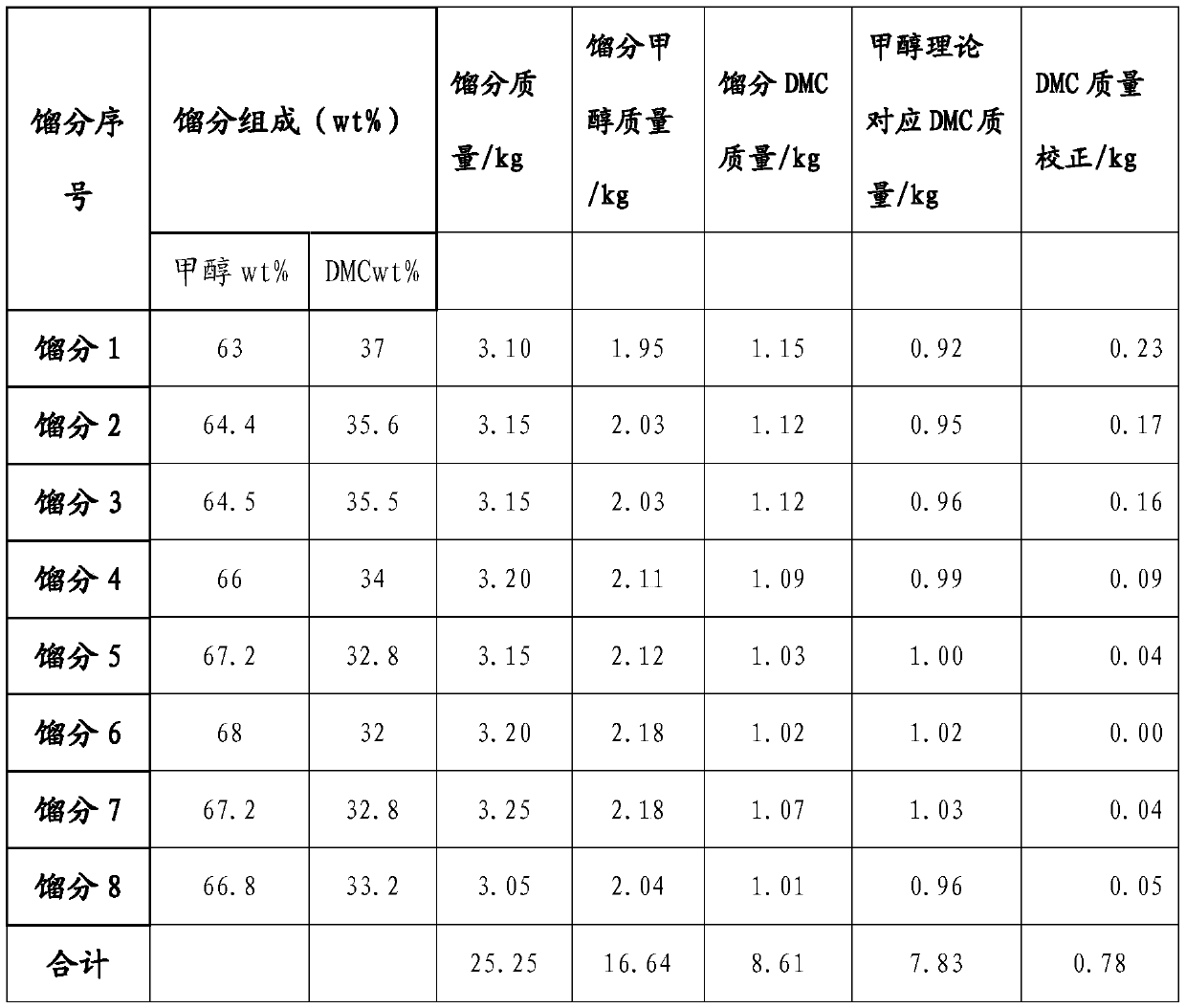A kind of polycarbonate polyol and its synthesis method and application
A synthesis method, polycarbonate technology, applied in polyurea/polyurethane coatings, coatings, etc., can solve economic disadvantages and other problems
- Summary
- Abstract
- Description
- Claims
- Application Information
AI Technical Summary
Problems solved by technology
Method used
Image
Examples
Embodiment 1
[0069] In this embodiment, the preset value of the mass percentage of carbonate contained in the rectification fraction is 32%.
[0070] Weigh 1574g of 1,5-pentanediol and 0.1574g of isopropyl titanate into a glass reaction kettle equipped with an oil bath jacket, a stirrer, a gas inlet, and a rectification column. Vacuumize and pass nitrogen three times to maintain normal pressure. Under the protection of nitrogen, the temperature was raised to a reaction temperature of 165° C., and 1700 g (the total amount of carbonate feeds predetermined by stoichiometry) of dimethyl carbonate was slowly added dropwise into the system. Since the temperature rise at the top of the column was observed, distillates were withdrawn continuously at a reflux ratio of 2:1-1:1. During the continuous feeding process of dimethyl carbonate, the adjustment of the reflux ratio is carried out according to the following table 1, to maintain the absolute value of the difference between the mass percentage ...
Embodiment 2
[0078] In this embodiment, the preset value of the mass percentage of carbonate contained in the rectification fraction is 32%.
[0079] Weigh 16261g of 1,5-pentanediol, 18450g of 1,6-hexanediol, and 3.45g of tetrabutyl titanate, and add them to a stainless steel reaction kettle equipped with an oil bath jacket, a stirrer, a gas inlet, and a rectification column middle. Vacuumize and pass nitrogen three times to maintain normal pressure. Under the protection of nitrogen, the temperature was raised to a reaction temperature of 156° C., and 35.0 kg (the total amount of carbonate feeds predetermined by stoichiometry) of dimethyl carbonate was slowly added dropwise into the system. Since the temperature rise at the top of the column was observed, fractions were continuously withdrawn at a reflux ratio of 2:1. During the continuous feeding process of dimethyl carbonate, take samples online and record the total fraction mass when sampling, subtract the total fraction mass recorded...
Embodiment 3
[0087] In this embodiment, the preset value of the mass percentage of carbonate contained in the rectification fraction is 32.0%.
[0088] Weigh 494.2 g of neopentyl glycol, 560.7 g of 1,6-hexanediol, and 0.0988 g of isopropyl titanate, and add them into a glass reactor equipped with an oil bath jacket, a stirrer, a gas inlet, and a rectification column. Vacuumize and pass nitrogen three times to maintain normal pressure. Under the protection of nitrogen, the temperature was raised to a reaction temperature of 115° C., and 1000 g of dimethyl carbonate (the total amount of carbonate feed in the stoichiometric predetermined amount) was slowly added dropwise into the system. Since the temperature rise at the top of the tower was observed, fractions were continuously withdrawn at a reflux ratio of 1.7:1, and the ratio of methanol:DMC in the fractions fluctuated in the range of 66.1:33.9-66.5:33.5wt%. Since the dimethyl carbonate content in the cuts was monitored to be higher than...
PUM
| Property | Measurement | Unit |
|---|---|---|
| hydroxyl value | aaaaa | aaaaa |
Abstract
Description
Claims
Application Information
 Login to View More
Login to View More - Generate Ideas
- Intellectual Property
- Life Sciences
- Materials
- Tech Scout
- Unparalleled Data Quality
- Higher Quality Content
- 60% Fewer Hallucinations
Browse by: Latest US Patents, China's latest patents, Technical Efficacy Thesaurus, Application Domain, Technology Topic, Popular Technical Reports.
© 2025 PatSnap. All rights reserved.Legal|Privacy policy|Modern Slavery Act Transparency Statement|Sitemap|About US| Contact US: help@patsnap.com



